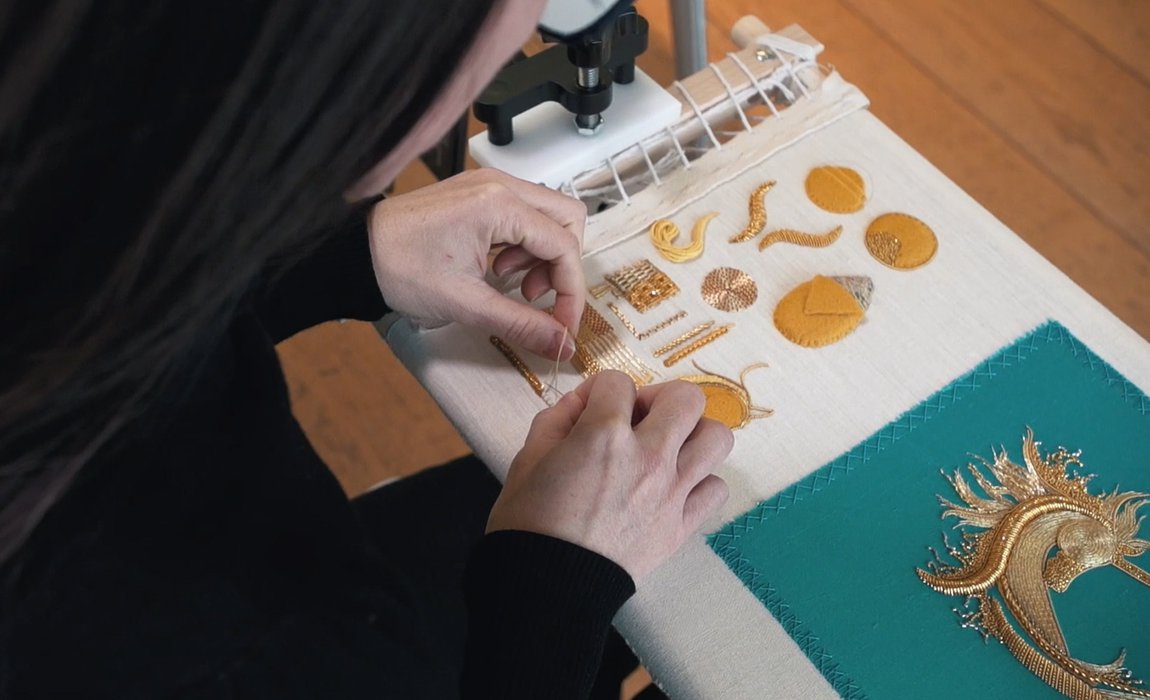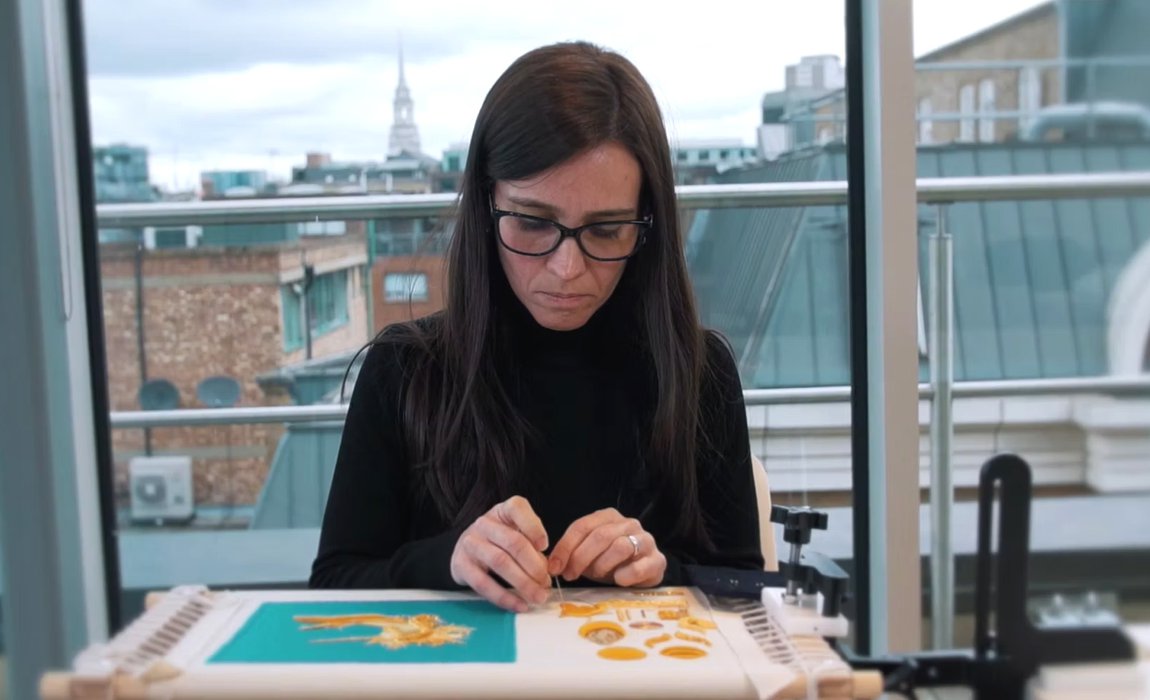Drawn + Formed: Embroidery artist Sabina de Oliveira Lima on reimagining ancient goldwork
Embroidered in stunning detail using hand-drawn gilt wires and threads, Pegasus depicts a unicorn against a sky blue backdrop, its flowing mane expressing a sense of freedom and passion.
The piece was beautifully rendered by embroidery artist and Freeman of the Gold and Silver Wyre Drawers Sabina Lima, and can be viewed until 15th September 2022 at Drawn + Formed, the Goldsmiths' Centre's latest free exhibition exploring the ancient craft of hand drawing gold and silver wire. We recently spoke to Sabina about her contemporary approach to this historic technique.
Drawn + Formed: Embroiderer Sabina Lima from The Goldsmiths' Centre on Vimeo.
So, for us novices, what exactly is goldwork embroidery and where would we traditionally see this craft applied?
Goldwork is a type of embroidery technique worked in metal threads and wires, like gold, gilt or silver.
It is an ancient technique dating back more than two thousand years. Traditionally, one sees this craft applied on ecclesiastical vestments and insignias, church furnishings, military badges, ceremonial dresses such as those for royal coronations, livery companies’ banners, to name a few. Because metal thread was expensive, goldwork embroidery was associated with power and wealth.
Today, it is often seen in accessories and in the gowns of fashion designers, such as Schiaparelli and Dior.
When did your fascination with goldwork embroidery start and how did you hone your skill to this level?
I loved embroidery and have practiced it since I was a kid. However, learning this technique only started as part of my degree in hand embroidery, four years ago. In the beginning, it was intimidating. The tutors started showing many marvellous samples that made you think: “no way I can do this! It takes how long?!” But I like a challenge, and in the end goldwork became an addictive practice to me. I always want to do more and better. Time, patience, and precision are key factors to achieve excellence, but also the desire to improve it.


How would you describe your design style, and can you highlight any of your favourite pieces involving hand-drawn gold or silver thread?
My designs are often stylised, and I always try to incorporate a sense of movement. I consider the design just as important to my work as the execution, and it is always planned in great depth. It starts with collecting visuals references to support the theme. Then lots of
sketches to explore and evolve the design, embroidery samples, stitch plans, prototypes (if needed) and finally the finished work.
When I created Pegasus, for example, one of the references was a sculpture located at the Trophy Gate at Hampton Court Palace. This was used mainly for the proportions of the horn. Another was a film I saw when I was teenager: The Black Stallion (1979). I cannot forget the moment when Alec (the kid) is riding the magnificent black Arabian horse on the beach. The mane, that “flies” in the wind, and the sense of freedom expressed in that scene were in my mind when I was embroidering this piece.
The pieces involving hand-drawn gold or silver thread that catch my attention are usually from other disciplines than hand embroidery, like jewellery. It really intrigues me how the artists manage to manipulate the same material common to us in such different and beautiful ways. The work of Giovanni Corvaja, Catherine Martin and Teri Howes are a few examples.


What excites you most about participating in the Goldsmiths' Centre's Drawn + Formed exhibition?
I feel honoured to see my work displayed next to some of the most distinguished makers who share a similar passion to me.
Why do you think it's important to keep the craft of using hand-drawn wire or thread alive?
The way that our ancestors worked with metal treads and wires is fascinating. It’s a way for us to express ourselves, our creativity and joy. Embroidery and craft skills should be worked into the curriculum of schools. Kids need to see that this craft as a viable career, as important and interesting as the more mainstream ones.